Anemones - planting and care in the open field
Do you want your garden to blaze with different colors and delight you, neighbors, and bees?
Then plant anemones, and they will pleasantly surprise you with their rare flowering, subject to any breeze (not without reason, in translation from Greek, anemone is "the daughter of the winds"), their compact size and relative undemanding care.
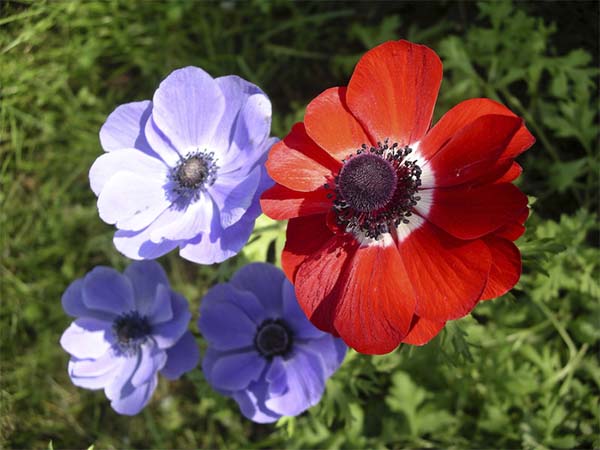
Content
Types and varieties of anemones
The most popular types of anemones are as follows:
- Forest;

- Crowned (anemone);
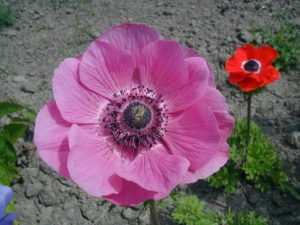
- Japanese (autumn);

- Tender (Blanda).

Anemones can also be further divided into 2 large groups: tuberous and rhizome. Rhizomes are more of a forest species. In stores, you can usually find exactly tuberous.
Worth knowing! Rhizome (forest) anemones are more unpretentious to care for than tuberous.
Growing rhizome anemones or their reproduction by division
It is optimal to divide the rhizomes in the spring. This is due to the fact that during this period the movement of the sap inside the plant is somewhat slowed down, which means that the flower will be able to take root normally after division.
Note! Reproduction by dividing rhizomes should be performed only with anemones older than 4-5 years.

What needs to be done to separate the anemone rhizomes:
- Dig up the rhizomes themselves.
- Cut into pieces 5-6 centimeters long and with at least one, or preferably several, renewal buds on each.
- Plant horizontally into a previously prepared hole to a depth of the same 5-6 centimeters.
Planting anemone tubers for germination and subsequent planting of seedlings in open ground
Planting tubers
Various sources often indicate that it is already possible to plant anemone tubers from the end of February. However, if you are going to plant tubers so early, then you will have to supplement the seedlings with special phytolamps or more economical LED counterparts. Even on the lightest southern windowsill in the apartment at this time there is still an insufficient amount of natural light, which means that the plant will certainly stretch out, and such delicate flowers as anemones, when pulled, will eventually bloom very weakly and sluggishly in the first year.
Thus, it is better to postpone the planting of anemone tubers to a later date, for example, to do this in the second half of March or better yet, early April.
According to the lunar calendar in 2021
Choosing the best date for planting the bulbs can help you Moon calendar.
Important! Planting anemone tubers both in a pot (for germination at home) and in open ground is recommended in accordance with the lunar calendar.
So favorable days for spring planting of anemone tubers in 2021 according to the lunar calendar are:
- in March - 8-12, 26-31;
- in April - 7, 9-15, 17-22, 27-30;
- in May - 2-6, 9-12, 20, 21, 29-31;
- in June - 7-9, 11-14.
Unfavorable days according to the lunar calendar for 2021 for planting anemone tubers in spring, the following dates are (days of the Full Moon and New moons, as well as the period when the Moon is in Aquarius, because it is a barren and dry sign -italicized):
- in March -9-10, 13, 28;
- in April -5-6, 12, 27;
- in May -2-4, 11, 26, 30-31;
- in June -10, 24, 26-27.
How to soak tubers
Important! If the tubers of the anemones are very small, then there is a high probability that the flowers will not bloom in the first year. Therefore, when buying planting material in the store, pay attention to the size of the nodules, choosing the largest.
To grow anemones, first of all, they must be properly prepared for planting, namely, soak the tubers in water.
Important! how wrong soak: put the tubers of the anemones in a container (glass), then pour water along with the head and stand for a day. This cannot be done - the anemones will simply die. They cannot be without air, they immediately begin to choke and emit a very disgusting, one might say, pharmacy smell mixed with ammonia.
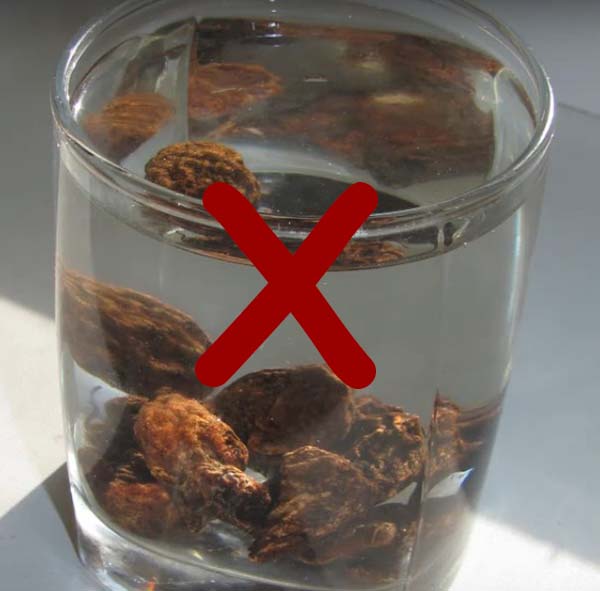
how right soak tubers of anemones:
- Take a napkin, cotton pads or even better a rag and put it in a container (container).
- Now you need to wet it in one of the fungicide solutions (the most popular, but still somewhat weak - "Fitosporin" or less well-known, but strong enough "Maxim Dachnik") or growth stimulant ("Zircon" or "Epin").
- Place the tubers on a soaked napkin, cotton pads or rag and cover with a dry rag, cotton pad or napkin on top.
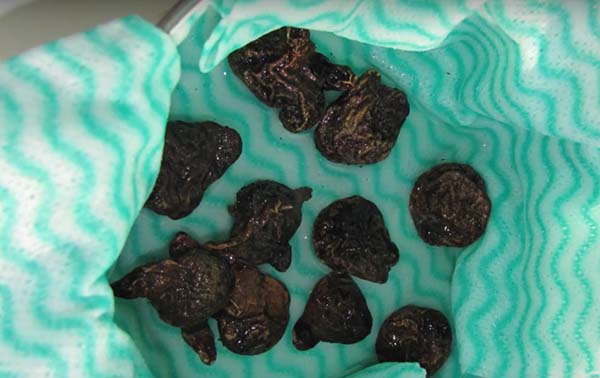
- For the best effect, cover the container itself with plastic wrap.
- Keep until it swells completely, which usually takes 30 minutes to 3 hours (depending on the quality of the planting material).

- If you have soaked tubers in "Epin", then after swelling they must be washed in warm water.
- All! The nodules are now ready to be potted.
Video: how to properly soak and grow anemone seedlings
Planting capacity and soil
Anemones do not like transplants, so it is advisable to plant them in separate containers. Moreover, very small pots (at least 250-300 ml) are not very suitable for planting. It is even better to use cut containers for milk or juice (liter) or 0.5 liter plastic glasses, in which it is imperative to make drainage holes, for example, one hole at the bottom will be enough.
The soil mixture requires a fertile and loose soil. You can prepare it by taking peat and sand in equal amounts, or by buying a ready-made mixture for flower seedlings in a garden store.
Planting tubers
It is very simple to plant anemone tubers for germination: fill the pots with soil, then spill phytosporin and plant (deepen) the tuber with a sprout (which, after swelling, became more noticeable) upwards, then shed water again so that the soil settles, and part of the sprout appears. Place in a bright, but cool enough place where the temperature is maintained within + 16-20 degrees.
Advice! Place a folded piece of paper at the bottom of the pots so that when the root system grows, it does not run out through the drainage holes.
Video: planting anemone tubers for germination at home
Seedling care
It is very desirable that anemones seedlings be grown at a low temperature of +16 degrees. If the air is too dry, and the heat is +25 degrees, these plants will wither.
Daylight hours should be at least 12 hours, and ideally 14 hours. Therefore, if you have the opportunity, be sure to supplement your plants.
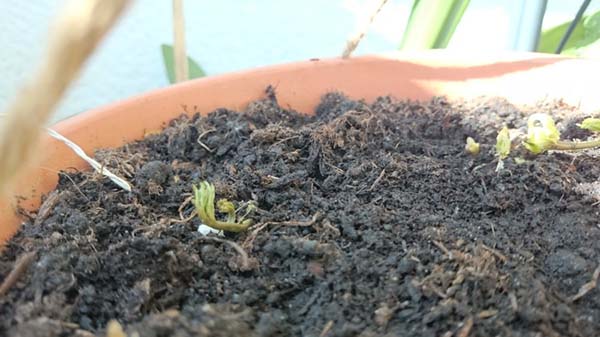
All care for the anemones that you planted in pots for germination consists in regular watering: the soil should always be moistened, it cannot dry out.

Planting anemones in open ground
It is necessary to plant anemones in open ground only when the threat of return frosts has passed. As a rule, depending on the climatic characteristics of the region, this moment occurs on average in the month of May.
Anemones are ideal for planting in partial shade. A very large shadow does not suit them.
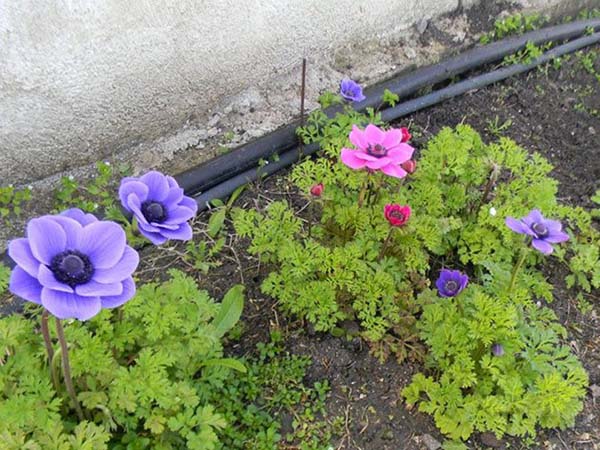
Flowers will not be able to develop normally if there is stagnant water, as, in fact, most plants. In other words, they like good drainage, which is easy to make from fragments of bricks, rubble or small river stones.
The soil they need is loose and nutritious, and it is desirable that from above it was still mulched with some kind of organic matter. To make the soil looser, you can add sand to it.
Step-by-step instructions for planting anemones in open ground with sprouted tubers:
- Choose the optimal drop-off location.
- Prepare the planting hole by filling it with ash and humus.
- Remove the seedlings from the pot along with the earthy clod and plant them in the hole.
- It is better to make the distance between plantings about 15-20 cm.
- Water moderately and mulch the plantings 4-5 centimeters.
By the way! You can plant pre-soaked anemone tubers directly in the open field. Planting technology is no different, unless you need to deeply deepen the tubers.
Features of planting and caring for tender anemone (Blanda)
Anemone Blanda has nothing to do with crown. It does not require digging for the winter or even shelter. In general, caring for this species is quite simple.
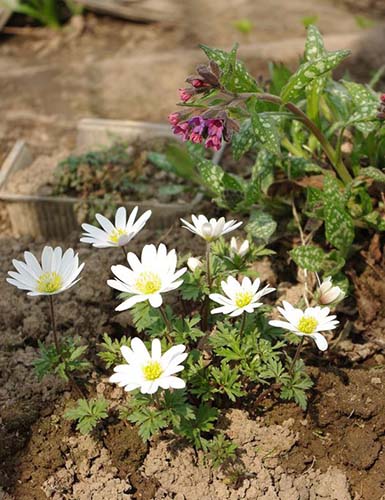
It is better to plant Blanda in autumn (in October-early November), but you need to catch it before frost. Preparation for planting is somewhat different, the tubers must be filled with hot water (+ 70-80 degrees) and soaked for 2 days (it is better to change the water 2-3 times a day) so that they swell enough.It is necessary to plant the blanda tubers to a depth of 4-5 centimeters at a distance of 2-3 centimeters from each other, preferably in a separate basket filled with a loose substrate. After planting, the basket must be buried in any flower bed or rock garden. You should also water the plantings with warm water for some time for their better rooting.
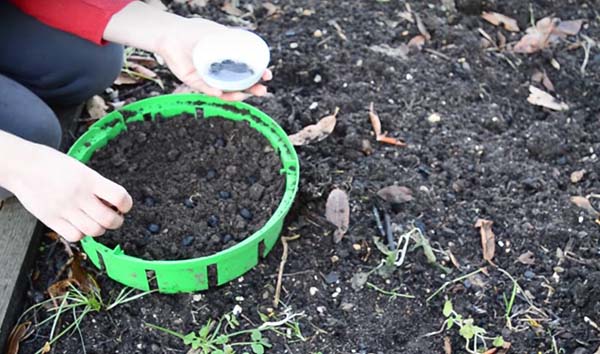
Video: planting and caring for anemone blanda (tender)
Growing anemones from seeds
Anemones can be grown from seed, but unfortunately, most seed growers get disastrous negative results. This is due to the fact that the germination capacity of even freshly harvested seeds is about 1/4, and they must first undergo stratification, in other words, they must be left for about 2-3 months in a cold and humid place (for example, in the refrigerator on the bottom shelf) ... Thus, if you want to plant anemone seeds in the spring, they must be laid for stratification in January. Planting seeds for seedlings (in March) and further care are pretty standard. The main thing is not to bury the seeds under any circumstances.
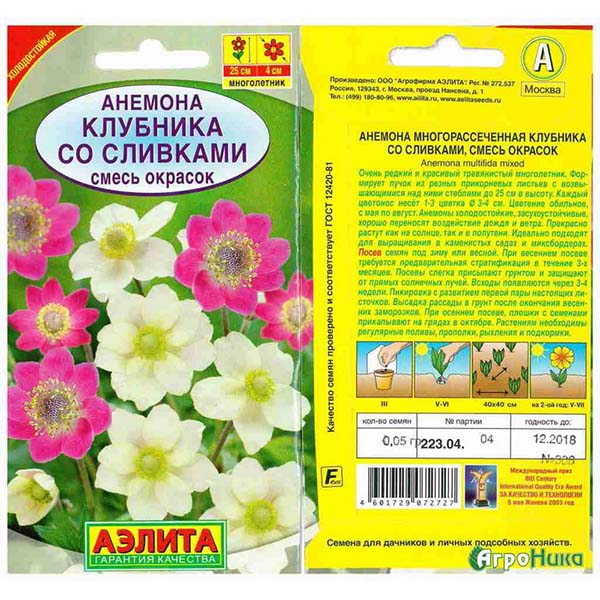
Therefore, it is best to plant anemones with seeds in the fall. During the winter, they will undergo natural stratification, and in the spring they hatch, and you will get healthy shoots. But we must be prepared for the fact that no more than 25% will rise anyway.
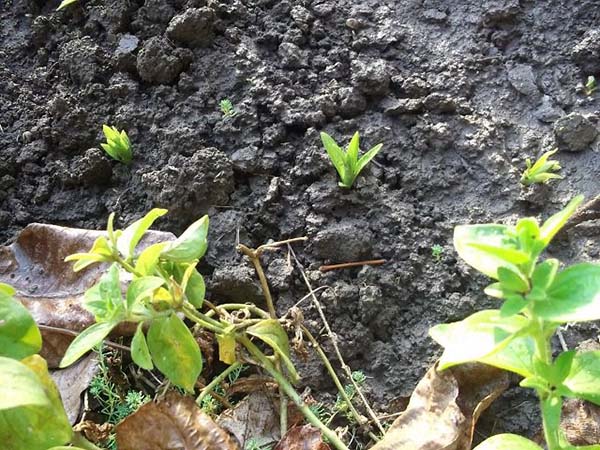
Outdoor care for anemones
It is quite simple to care for anemones, but at the same time it is quite laborious. The main thing in care is the constant maintenance of soil moisture. However, it is also impossible to fill in and allow stagnation of moisture, otherwise the roots of the plant may begin to rot. Therefore, as mentioned earlier, the landing site must have good drainage, or it must be located on a hill. The use of mulch, which can be taken from fallen leaves, peat, sawdust or some other organic matter. Mulching will not only help the plant stay hydrated longer, but it will also prevent weeds from growing.
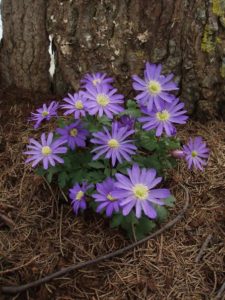
Advice! It is especially important to regularly and abundantly water the anemones during their budding period and on hot summer days. Watering, of course, should be done in the morning and evening (after sunset).

As for dressings, they are not particularly required. However, for better development and flowering, you can use mineral and organic fertilizers during budding and direct flowering. For this, a solution is perfect, for example wood ash.
Important! In no case, do not try to use fresh manure for feeding, only humus or compost.
Anemones should be periodically weeded from weeds and loosened after watering, but this should be done very carefully, because the root system of this flower is located very shallow.
Anemones overwinter well, however, their mulching layer for the winter must be increased by 2-3 times and covered with spruce branches or covered with a thick layer of leaves and spunbond.
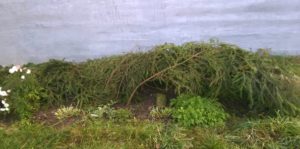
Important! Here it is worth making a clarification: they normally overwinter in the Central lane (Moscow region) only rhizome anemones, and not tuberous... Tubers for the winter are dug up and stored in the refrigerator or other cool place until spring planting. But in the harsh conditions of the northern regions (the Urals and Siberia), many gardeners also dig out rhizomes.
Video: caring for an anemone in the garden - watering and feeding
To ensure that anemones are guaranteed to present their flowers every year, tune in to error-free preparation for planting and skillful care of plants in the open field.

